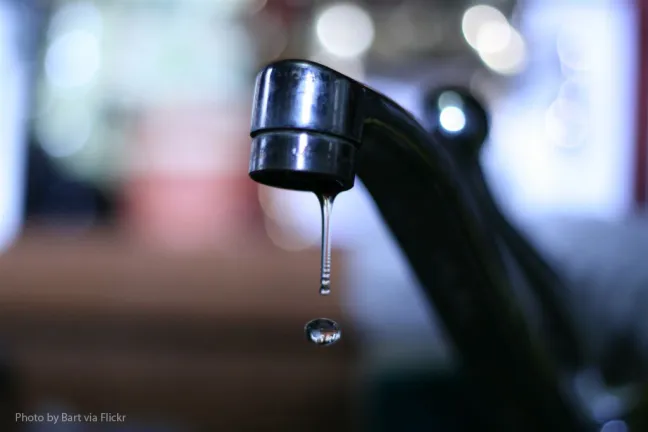High lead levels in Flint, Michigan's drinking water have raised national attention about the safety of drinking water. Here's what residents should know about drinking water in Portland and Multnomah County.
Portland’s drinking comes from two high-quality sources – the clean, cold and protected water of the Bull Run Watershed and the Columbia South Shore Well Field. The Portland Water Bureau reports that our community's source water meets or surpasses all federal and state drinking water standards. The Portland Water Bureau service area covers parts of Multnomah, Washington and Clackamas Counties.
The Portland Water Bureau reports that we do not have lead pipes. Our distribution system has never used lead service lines. Portland treats its drinking water to make it less corrosive. This treatment has shown more than a 70 percent reduction of lead in water from high-risk homes.
The main source of lead in drinking water in Portland is from lead solder used in home plumbing. Even then,only very few homes are affected – generally those built between 1970 and 1985. Lead can also be found in brass plumbing fixtures and components installed prior to 2014, with components older than 1985 having potentially higher amounts of lead.
The Portland Water Bureau regularly tests for lead from homes known to contain lead solder. These test results consistently meet federal regulations.
In Portland, we have had a lead exceedance once in the last 10 years. The exceedance was from testing at homes known to have lead solder and are considered to be the worst case for exposure to lead. We continue to look at ways to further reduce the levels of lead in these high-risk homes and throughout the system.
The greatest source of exposure to lead in the Portland region is from lead paint in homes build before 1978.
Portland has a unique, comprehensive approach to dealing with lead in our community. The Portland Water Bureau treats the water to make it less corrosive. This treatment has reduced levels of lead at the tap up to 70 percent. The Portland Water Bureau also funds education, outreach and testing for all sources of lead, including lead paint.
The Portland Water Bureau provides free lead and water test kits to any customer by request.
Multnomah County operates the LeadLine and offers free water test kits to any customers of these water districts on request.
If you are concerned about lead levels in your drinking water, contact the LeadLine at www.leadline.org or 503-988- 4000 to request a free lead-in-water test kit.
Here are some simple steps you can do to reduce your exposure to lead in drinking water from your home plumbing:
- Run your water to flush out lead. If water hasn’t been used for several hours, run the water for 30 seconds to 2 minutes or until it becomes cold or reaches a steady temperature before drinking or cooking.
- Use cold, fresh water for cooking and preparing baby formula. Do not use water from the hot tap to cook, drink, or make baby formula. Lead dissolves more easily into hot water.
- Do not boil water to remove lead. Boiling water will not reduce lead.
- Consider using a filter. Confirm the filter is approved to reduce lead. Always maintain and replace a filter device in accordance with the manufacturer’s instructions to protect water quality. Contact NSF International at (800) NSF-8010 or www.nsf.org for information on performance standards for water filters.
- Test your child for lead. Ask your physician or call the LeadLine at 503-988-4000 to find out how to have your child tested for lead. A blood lead level test is the only way to know if your child is being exposed to lead.
- Consider buying low-lead fixtures. As of Jan. 1, 2014 all pipes, fittings, and fixtures are required to contain less than 0.25% lead. When buying new fixtures, consumers should seek out those with the lowest lead content. Visit www.nsf.org to learn more about lead content in plumbing fixtures.
- Regularly clean your faucet aerator. Particles containing lead from solder or household plumbing can become trapped in your faucet aerator. Regularly cleaning every few months will remove these particles and reduce your exposure to lead.

